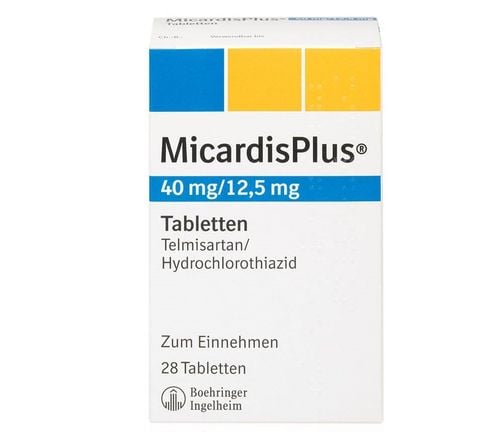This is an automatically translated article.
Hyperventilation syndrome is an anxiety-related dyspnea and tachypnea with systemic symptoms that commonly occurs in young women. It is important to distinguish between hyperventilation syndrome and panic disorder, because both diseases have similar manifestations.1. What is Hyperventilation Syndrome?
Hyperventilation syndrome is a phenomenon where the patient's breathing and breathing processes are out of balance, namely, the tendency to exhale more than to inhale. If this phenomenon is repeated, it can cause a large amount of CO2 deficiency, which affects the patient such as shortness of breath, dizziness, abnormally fast heart rate, even leading to severe muscle spasms and unconsciousness. There are many causes leading to hyperventilation syndrome, which can be mentioned as:
Psychological instability: This is the main cause of hyperventilation symptoms, mostly due to factors such as panic, anxiety, stress or anger. In addition, stimulants also contribute to entering the body, causing emotional changes, causing hyperventilation Respiratory diseases: chronic obstructive pulmonary disease, bronchiectasis, pulmonary emphysema, asthma Encephalopathy brain: head trauma, increased intracranial pressure, traumatic brain injury Diabetes can also cause hyperventilation In addition, some other factors cause hyperventilation such as: air pollution gas, pregnancy, ketoacidosis, severe bleeding or pain or inadequate nutrition.
2. Mechanism of formation of hyperventilation syndrome
It must be determined that there are many mental and physical factors at play in this condition. Therefore, there are many causes of hyperventilation at the same time. The key causes and underlying mechanisms can be summarized as follows:
Psychiatric causes: patients with anxiety disorders may have a predisposition to hyperventilation based on biological vulnerabilities, personality and cognitive variables. For example, when the patient explains that chest pain is due to a dangerous heart disease, it will stimulate the sympathetic nervous system and cause rapid breathing and increased ventilation. Some studies have also shown that these patients have chemoreceptors that are hypersensitive to CO2, so they may increase breathing in response to very small increases in CO2. Causes of respiratory disease: features such as hypoxemia, pulmonary congestion can stimulate receptors to cause hyperventilation CNS disorders: brain stem damage can also cause changes in breathing patterns such as breathing. Biot, respiratory depression, Cheyne-Stokes breathing due to destruction of the ventilation center. Metabolic acidosis: is a common cause of tachypnea as the body's attempt to excrete CO2 to reduce acidosis. Pregnancy: The increase in progesterone during pregnancy in combination with estrogen increases the susceptibility to hypoxemia, causing central hyperventilation through the carotid body.
3. Manifestations of hyperventilation syndrome
Simply put, hyperventilation is the patient's breathing disorder accompanied by some other typical symptoms as follows:
Initially, the patient tends to breathe quickly and with a lot of air, but the Inhaled air is quite small, over time, you will experience more yawning even though it is not due to drowsiness. The patient may have a feeling of tightness as if something is blocked in the chest, the chest pain appears more and more gradually, even spreading to the whole chest. Patients with hyperventilation may also have a high fever or persistent smoldering fever in some cases Cardiac arrhythmias are also classic symptoms of hyperventilation. Accordingly, the patient's heart often beats faster than normal, psychological stress and anxiety are more.
4. How to treat hyperventilation syndrome?
About the method of quick treatment of hyperventilation syndrome:
First of all, the patient needs to keep his mind stable, to avoid panic that makes the situation worse. Keep a clear space to help breathe easier, can ask people around for support by rubbing and patting on the back The method of breathing through each nostril can help reduce the amount of air out of the body Control Breathe by practicing slow and deep breathing, you should keep the amount of air in your lungs for about 5 seconds and then slowly exhale, this is very good for regulating the respiratory system and nourishing healthy lungs. Use a paper bag as a manual oxygen tank, breathe about 12 times inside the bag and then breathe 12 times outside until breathing returns to normal For long-term treatment of hyperventilation syndrome:
There are drug classes that can May be used to treat hyperventilation but should be prescribed by a specialist and closely monitored. Acupuncture can also be used to reduce the risk of hyperventilation in people who are often stressed. Breathing exercises that help regulate breathing are also effective in reducing the risk of recurrence. Provide adequate nutrition for a healthy body. Gentle nursing exercises, yoga or meditation should also be done regularly to relax and regulate breathing. Hyperventilation syndrome is an anxiety-related dyspnea and tachypnea with systemic symptoms that commonly occurs in young women. Understanding the causes and symptoms of this syndrome helps you easily distinguish it from other diseases for effective intervention and treatment.
Follow Vinmec International General Hospital website to get more health, nutrition and beauty information to protect the health of yourself and your loved ones in your family.
Please dial HOTLINE for more information or register for an appointment HERE. Download MyVinmec app to make appointments faster and to manage your bookings easily.













